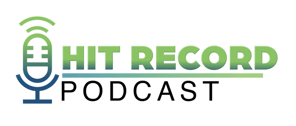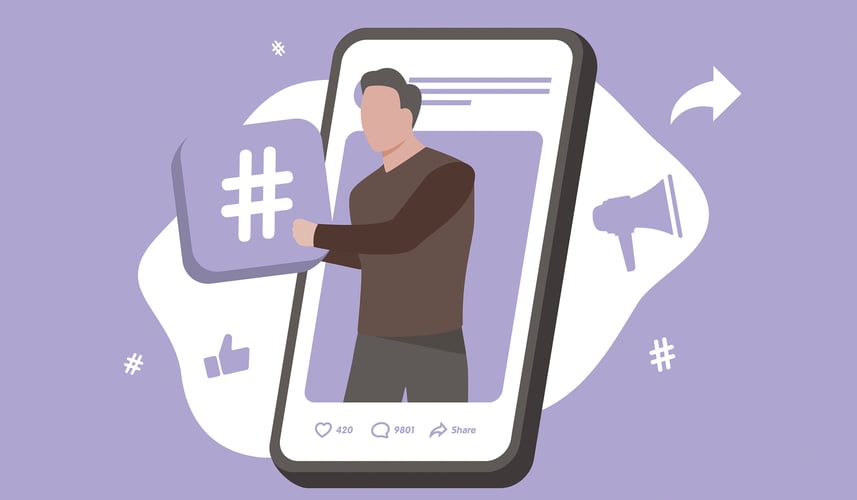Episode 57 - Is your Bank or Credit Union on TOO Many Social Media Platforms?


Don't Miss An Episode, Subscribe Now

Meredith Olmstead of FI GROW Solutions and Sophie Bawany discuss evolving social media strategies for financial institutions.
Three Key Takeaways:
- Know Your Audience: Different age groups favor different platforms; younger users lean towards TikTok and Instagram, while older ones use Facebook.
- Tailor Content: Platforms require unique content to match their specific audience and algorithms.
- Invest Smartly: Achieving organic viral growth in finance is rare; budgeting for content boosts and influencer partnerships is key.
Transcription:
If you're looking for best practices for your bank or credit union, join us while we talk all things sales, marketing, and strategy for financial institutions. Let's make it happen with FI GROW Solutions.
Hi there. I'm Meredith Olmstead, CEO, and founder of FI GROW Solutions. We are a digital marketing and sales consulting agency, and we work exclusively with banks and credit unions. And I'm here with Sophie Bawany. Say hi, Sophie.
Hi guys.
Sophie is one of our inbound marketing specialists/strategists, but she is also our in-house kind of guru around social media marketing and strategies for clients, banks, and credit unions around the country and what they're doing that's working on social media.
So she and I were just having a really interesting conversation about how to pick which social media networks and accounts for your credit union or your bank in this day and age. Everything shifts so much in marketing and the digital space for pretty much all industries, and so, a lot of what credit unions and banks used to do and used to value on social media platforms has really changed over the last two years, one year, five years, all of those years.
And so, Sophie and I were talking about this, and I was like, "Let's hit record and let's talk about this. Like how do we know when one of our clients, a banker, credit union has too many social media accounts or maybe isn't allocating their resources and their time on the right accounts?" And so, Sophie was kind of starting to unpack that for me. So what's the first thing we were talking about, Sophie, that kind of helps us understand where people should be spending their time?
Yeah, I think it's a hard conversation to have with brands sometimes, especially because we want everyone to be everywhere, we want our reach to be maximized. So I think really understanding, first of all, where is your current market and where's your target market so that you can hone in? Because not every age group is on every platform. So taking the time to sit back and say, "Hey, my younger generation is on Instagram and TikTok, but my more active clients, they might still be on Facebook." So you just need to know where they live.
Okay. So basically, you can't get rid of one in order to just do another. So you do have to be somewhat realistic in that while the next greatest thing might be really fun and exciting from a younger generation's perspective, it may not be, from a dollars and cents perspective, where some of your more active, older customers and members might be spending their time.
So like my generation, late 40s, 50s, those are people who are still prime earning and lending and borrowing years, and they are very profitable customers for banks and credit unions, so we have to respect those generations while also kind of looking towards the younger generation to reach out to build new customers. So using the platforms where your audience is, that makes sense.
So what are you seeing on those platforms? So we said, definitely Facebook for a little bit of the older users, but for a little younger, you would say maybe skew to Instagram and possibly TikTok in the future?
A hundred percent. And also, it's important to note that when you're allocating and looking at results, it might take you longer to see quantifiable results on these newer platforms because you're meeting an entirely new audience who takes information differently, who reacts differently. They might not want as many informative, they want more fun with a little bit of education sprinkled in. So going into it with a realistic mindset of you might need to run these campaigns a little longer and invest more time into them.
So managing expectations for what you're going to be able to show in terms of results. And you're probably not going to be able to drive lots of new accounts in the door in two to three months, but maybe you could grow an audience, a following, trust in a new audience over like the six to 12-month timeframe.
Yeah, six to 12 months is a fair read. Mm-hmm.
Okay. And then, we were talking about, what are the long-term goals? That can really inform where you are placing time, resources, energy from a social media marketing perspective. So what do you mean by long-term goals? What would be some things to think about?
I mean, obviously, your only sole purpose is to get more leads and to get more click-throughs and to get deals closed, then Instagram and TikTok may not be your best bet because we can't use those necessarily to generate direct sales, you can, but it just is a longer process. So tried and tested places like Facebook, using your social media, digital ads accounts, and kind of making them work together. Understanding awareness increase and popularity might be what you need those two platforms for, whereas Facebook or whatever, necessarily, has been working for you, allocating funds where you already have your older generation who's actually looking for loans [inaudible 00:04:57]. And so, just knowing where the audience lives.
The other thing, I just did a podcast recently on user-generated content, and we've also talked a bit about reviews recently, online reviews. And it's funny how things have really shifted in that realm where it used to be that you could do almost a whole campaign, like a marketing campaign around trying to drive people to leave reviews, places like Facebook. Nowadays, we've actually gotten to the point with clients where a lot of our clients are turning off Facebook reviews altogether because they're so filled with spam almost universally across industries. And so, now people are actually exiting the social media space for some of that in terms of a goal or a strategy and going more to Google and Google My Business. So that's definitely another kind of thing to keep in mind.
So if your goal is really to say, "You know what? I need more testimonials, more members or customers who are telling people online why they like doing business with our bank or credit union," probably, social media may not even be the place for that anymore. You may really want to leverage like a tool or an email campaign that sends people to Google My Business pages to leave reviews.
A hundred percent.
So what about drawbacks? You're saying drawbacks, if you're really trying to maybe push out onto a new platform like a TikTok while maintaining presence in Facebook and Instagram, say, or Twitter or something like that, what would be some drawbacks that people should consider?
I think you just need to really set your expectations, understand that even with strategist and having a backend support system, there's still going to be some internal ask of time management, understanding that you have quality content across all the platforms and making sure the content fits the platform you're using.
It used to be we could push out a picture and we could put it on Instagram, Facebook, and TikTok, it's changing, the algorithms now want unique content for each platform. So do you have the resources and do you have the budgets to do that and sit back and say, "Hey, we need to create three different pieces of content that can go on three different platforms?
Yeah, I mean, you can get away with sharing similar content probably across LinkedIn, Facebook, and Instagram, but even those, we still like to mix them up because your hashtag strategy on Instagram is going to be very different than the quality content or the more professional slant around content that you would want to share on LinkedIn. So even though it could almost look the same, the content needs to be somewhat presented a little differently. So it is important to customize it. So really making sure that you're doing quality content over quantity and that you don't want to spread yourself too thin because then you've end up with five or seven networks that people aren't maintaining or they're not looking at, and that gets bad, that looks really unprofessional.
So I know we talked about this, which I think is important, is really understanding the strength of your internal team or the people that you have internally at your organization to call on to create content. Unpack that a little bit for me.
Yeah, you'd be amazed. When you have credit unions and local banks hiring younger team members, sometimes we forget to ask inside our own neighborhood, our own house, "Hey, what are you good at?" And somebody might be amazing at witty captions and creating really nice quick reels. So if you have a team, definitely lean into them and see what they're good at, and maybe they can kind of lead one, even if they take one platform off your hands, that means you're getting one quality content taken care of, and then you can focus on maybe something else. So it is, it's really important. You'd be surprised at how many younger team members can take over the younger platforms.
Well, and honestly too, get out of your siloed departments. It doesn't have to be all marketing people who do all of that internal content. Get out there and talk to fun tellers or people who are new in the lending department or who are working in the call center and are having a good time there, whatever. Really tapping into people in other departments can be a huge resource for sure that I definitely see doesn't happen quite as often as it needs to.
And then, the last thing we were talking about was, of course, budget. And I mean, all of this takes budget because people being paid to work for you takes budget and using their time takes budget, that's an expense because their time is valuable. But in terms of actual other budget to layer into the mix, what do we mean by that?
So unfortunately, and I don't want to be the bearer of bad news, but we have this dream of content going viral and you're going to hit 5 million, unfortunately, with the industry that we're discussing, it is almost impossible to organically go viral with sheer good content. You can have the best message, the best videography, the best music, it's not going to happen. So we do need to put some money behind it, make sure it's getting the eyes it needs, and then let it grow. But we can't base it... It's not a makeup tutorial, it's not a how-to, it's finance. And so, because of the nature of the industry, we do need to give it a little bit of a backend push. And I think being honest and upfront with our clients and telling them, "This is not going to go viral on its own," I think that's the best thing we can do [inaudible 00:10:20].
So basically, you need to have a strategy and a budget to supplement the reach of the content that you're sharing. It's not going to be found on its own, it will need ad dollars behind it in order to get the impressions that need people to get to drive engagement.
The other thing that we would say is if you really, really want to be driving engagement, especially towards a younger audience, find some influencers that you can partner with because you've got this built-in trust and a built-in audience with them that they would bring to the table. That also takes budget, obviously, because you have to pay those influencers for those kinds of relationships and those interactions and posts and content, but it can be very, very useful in growing your audience in a new market or reaching new, younger, potential members or customers. So absolutely kind of a different way to think about ad support. So it's not actually just ads, like paying for impressions, but actually paying for that kind of a partnership.
And we have seen a lot of success with any of our clients that work with influencers because those influencers now, especially with lifestyle influencers, they're trying to rein it in because of the economy and they're realizing high consumption isn't working for their audiences, so you'll see a lot of budget-friendly reels that they're doing. And so, tying it in is very easy for them, it's very organic and it's very welcomed by their audiences right now.
Nice. So it's kind of super, super topical right now with kind the economy being a little bit rocky and things being a bit uncertain in that sense. So makes sense a lot.
All right. Awesome. Thank you so much, Sophie. I really appreciate your time.
We also have a lot of other podcasts around social media marketing and digital ads, we've done a few on partnering with influencers that could help if that's an area that you want to dig into a little bit more, so please visit us at figrow.com, lots of other great resources there. Otherwise, let's just all get out there and make it happen.








Blog comments